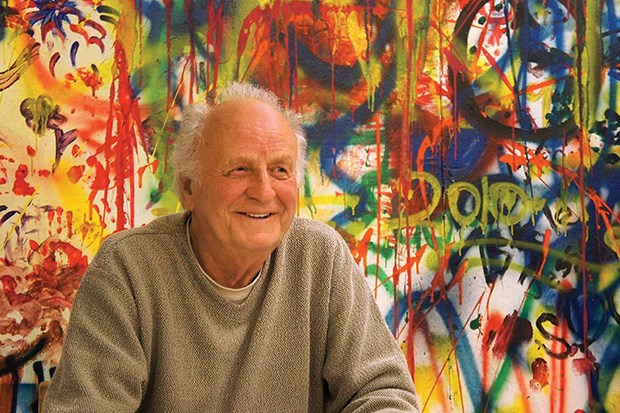Song of the Earth: sculptured vessels by Karl Stittgen, on display until Oct. 18 at the Ferry Building Gallery, 1414 Argyle Ave., West Vancouver. Meet the artist: Friday, Oct. 2 and Saturday, Oct. 3, noon to 2 p.m.
Before Karl Stittgen starts talking about his latest ceramic work, he first recites a passage from Henry James' 1893 short story The Middle Years.
"We work in the dark - we do what we can - we give what we have. Our doubt is our passion and our passion is our task. The rest is the madness of art," he quotes.
That saying "is sort of my leitmotif," Stittgen explains during a phone interview from his Pender Island home. Like many artists, he often has doubts about his own work, but says those doubts only serve to fuel more creation. A well-known name in the jewelry business, Stittgen immigrated to Canada from Germany in 1952 and opened his own jewelry store in West Vancouver in 1954 (Stittgen Fine Jewelry on Bellevue Avenue carries on his tradition). Long retired from precious metals and gemstones, he now works
in a much more pliable medium - clay. Thirty of his sculptural hand-built stoneware vessels are on display at the Ferry Building Gallery until Oct. 18 as part of the Song of the Earth exhibit.
"I do not use the word pots," Stittgen stresses, leaving that term for potters who work on a wheel. "Everything is vessel-based, meaning it has an opening, not necessarily that you stick some flowers in it."
All his pieces are fired at a very high temperature, around 1,250 degrees Celsius. "High-firing," as the process is called, vitrifies or waterproofs the clay.
"And it does wonderful things to the glazes," Stittgen adds, explaining the end result is always a bit of a surprise.
Much of his ceramic work exemplifies the wabi sabi esthetic, which, in Japanese art, celebrates the beauty of imperfection.
"We have no control over it," Stittgen says of what happens inside the kiln, but adds with a chuckle, "You can also have an accident and nothing works."
Stittgen has a studio inside his Gulf Island house, which he designed himself based on Frank Lloyd Wright's principles of organic architecture. Named Halcyon Days, he lives there with his wife Nora, who is also an artist. The untamed landscape surrounding their island oasis is an endless source of artistic inspiration.
Tree bark, lichen, seafoam and other elements of nature are reflected in the shape and texture of his pieces. Rather than put a bouquet of pretty flowers inside one of his vessels, he's more likely to display a few dried branches hanging with moss - if anything at all. "That sort of goes together with the roughness of the texture of the pottery."
Stittgen didn't start working in clay until about 10 years ago. After four decades making and designing his signature organic and architecturally inspired jewelry, and with a number of retail stores under his name, he retired from the business in 1995, built his current house, and began looking for a new medium to express his ideas. He had long appreciated and collected ceramics, so clay was a natural choice. Back in 1954, he opened a craft store called Creative Hands on Clyde Avenue in West Vancouver and got to know a number of well-known local ceramic artists. He also had the chance to visit some Bauhaus potters living in California.
"So naturally, when I had the time, I got myself some clay," he says.
When he first dug his fingers into the earthy material, he felt like a child with a lump of Play-Doh.
"It's a wonderful material to express what's in you," he says. "If you have any sort of ideas in you, you take that clay and right away you can form it."
The sculpting process was refreshingly quick compared to jewelry-making. "To make a piece of jewelry takes days, and that is what I wanted to get away from," he says. Though the two art forms are quite dissimilar, Stittgen maintains the same philosophy he always has when it comes to selling his work to clients. "It has to speak to you," he says. "If it speaks to you, you should have it."
He signs off with a quote he developed himself and has used since his jewelry days: "If you feel as well as see my work, we share a common thought. If my work speaks to you then we embrace the essence of things."



